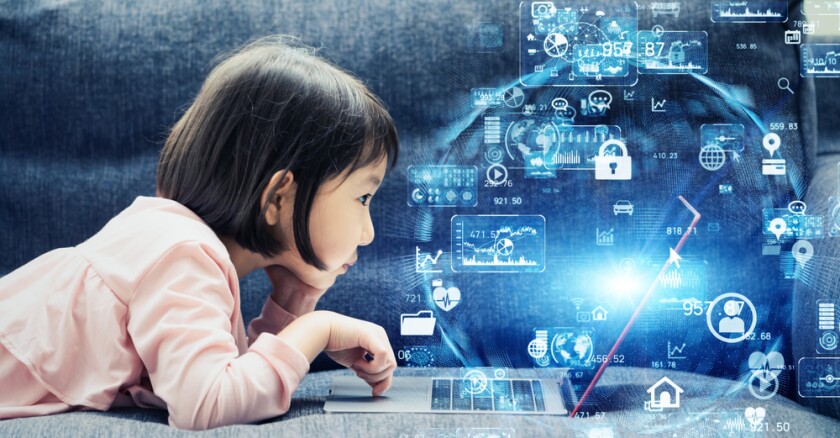Her teacher, Ms. Nelson, had told the class they could each print a coin with their symbol of choice on it. So, like Tara, they all got busy picking their favorite designs and doing their best to replicate the images on their tablets.
Before long, a 3D printer started humming along in the background of the classroom, methodically transforming each design from a mere image on the students' tablet screens into tangible objects they could hold with their hands.
Zumbrota-Mazeppa Primary School purchased the 3D printer last year with the goal of helping spark students' curiosity. But they aren't just teaching students about technology in and of itself. Instead, they're using it as a way to bridge the divide between subjects and create more holistic education.
"It's more than just printing," second-grade teacher Lisa Nelson said. "It's learning how to use the tool and connecting it to the curriculum."
A table along the back of the classroom houses a treasure trove of the class' previous projects with the 3D printer: The Washington Monument, the White House, the Statue of Liberty, and the Liberty Bell — crack included.
One student held up a detailed, plastic replica of Mt. Rushmore, showing a slight flaw.
"The glasses broke," the student said, pointing to Theodore Roosevelt's face.
At their own tables in the classroom, each student had a plastic figurine that they had made with the printer as well. They call them their "block buddies."
"They have an app where they get to create everything from their shoes to their hair," Nelson said. "We've been talking about character traits. We've also been talking about biographies, so they wrote a biography for their block buddy."
The class has seen quite a bit of use out of those plastic characters. With the help of a green screen, the students have turned their block buddies into meteorologists giving weather reports. They're also using green screens to send both themselves and their block buddies to a handful of places, like national monuments and New York City.
But the 3D printer is only one of the ways the school has immersed students in technology. In another room, the students were coding robots. Two classmates huddled over a tablet, dragging a set of commands into the order they wanted: Turn right, move 60 centimeters forward and so on.
Just as Nelson uses the 3D printer to augment her teaching about American history, she's started using the robots to teach about the life cycle of different organisms in nature.
The students' project for the day was to make their robots move through the life cycle of a butterfly. The kids had four laminated pictures laid out on the ground: a larva, a caterpillar, cocoon and butterfly.
Each group of students had to measure the distance from one picture to the next with a ruler and then plug the commands into their tablets. From there, the robots meandered from one picture to the next, not unlike a baseball player making his way from base to base.
The school even started having the second-graders work with the younger students in the building to foster their learning too.
"It's really about how we can get kids more engaged and interested in the moment," Primary School Principal Wendy Ahren said. "We're trying to get that imagination going to learn in a different light."
©2023 the Post-Bulletin. Distributed by Tribune Content Agency, LLC.







